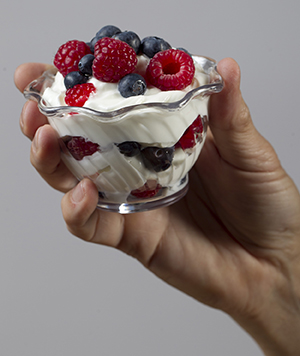Eating salt (sodium) can make your body hold on to too much water. Extra water makes your heart work harder. Canned, packaged, and frozen foods are easy to prepare. But they are often high in sodium. Here are some ideas for low-salt foods that you can easily make yourself.
For breakfast
-
Fruit or 100% fruit juice. It's better to have whole fruit instead of 100% fruit juice.
-
Low-sodium whole wheat bread or an English muffin. Look for sodium content on Nutrition Facts labels.
-
Low-fat milk or yogurt
-
Unsalted eggs
-
Shredded wheat
-
Corn tortillas
-
Unsalted steamed rice
-
Regular (not instant) hot cereal, made without salt
Stay away from
-
Sausage, bacon, and ham
-
Flour tortillas
-
Packaged muffins, pancakes, and biscuits
-
Instant hot cereals
-
Cottage cheese
For lunch and dinner
-
Fresh fish, chicken, turkey, or meat—baked, broiled, or roasted without salt
-
Dry beans, cooked without salt
-
Tofu, stir-fried without salt
-
Unsalted fresh fruit and vegetables, or frozen or canned fruit and vegetables with no added salt
Stay away from
-
Lunch or deli meat that's cured or smoked
-
Cheese
-
Tomato juice and ketchup
-
Canned vegetables, soups, and fish not labeled as no-salt-added or reduced sodium
-
Packaged gravies and sauces
-
Olives, pickles, and relish
-
Bottled salad dressings
For snacks and desserts
-
Yogurt
-
Low-salt or no-salt-added granola
-
Fresh fruit and vegetables
-
Unsalted, air-popped popcorn
-
Unsalted nuts or seeds
Stay away from
-
Pies and cakes
-
Packaged dessert mixes
-
Pizza
-
Canned and packaged puddings
-
Pretzels, chips, crackers, and nuts—unless the label says unsalted


